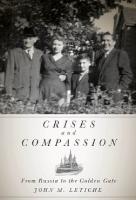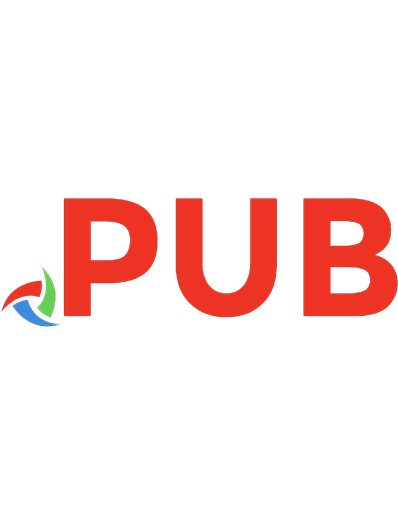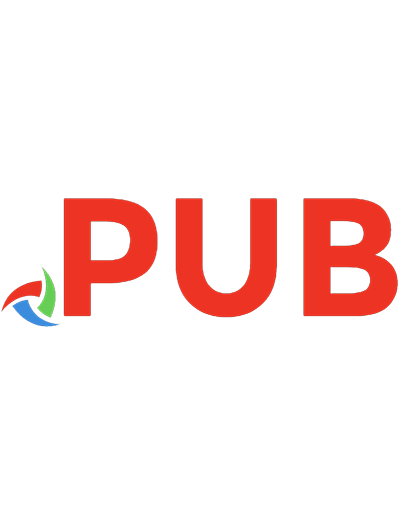Golden Gate Gardening [2 ed.] 157061136X
"Golden Gate Gardening", the definitive primer on vegetable gardening in Northern California, is encyclopedic
485 125 10MB
English Pages 416 [413] Year 1998
Polecaj historie
Citation preview
The complete guide to year-round food gardening in
the San Francisco Bay Area & Coastal California
BY PAM PEIRCE
(OLDEN (zATE (x ARDENING
GARDENING IN THE FOG Raising a garden in coastal California requires special knowledge and care. With its cool summers and mild winters and seasonal rains and fog, this region presents us with a host of unique problems and opportunities specific to coastal gardening. Golden Gate Gardening is the definitive guide to identifying those unique charac teristics and helping ensure a prolific and productive harvest all the year round. The shaded portion of this map shows the zone of marine influence on the Central California coast. In this zone, which extends up and down the Pacific coast from Santa Monica into Oregon, the warmest weather occurs in the fall, rather than in the summer.
S, ool
(xOLDEN (ATE (FARDENING The complete guide to year-round food gardening in the San Francisco Bay Area & Coastal California
Pam Peirce
SASQUATCH BOOKS SEATTLE
Copyright © 1998 Pam Peirce
All rights reserved. No portion of this book may be reproduced or utilized in any form, or by any electronic, mechanical, or other means without the prior written permission of the publisher. Originally published in 1993 by agAccess, Davis, California, in cooperation with Riverhouse Nursery, Sacaramento, California
Printed in the United States of America. Distributed in Canada by Raincoast Books Ltd. 12
11
10
09
O8
8
7
6
Cover art: Jennie Oppenheimer Interior illustrations: Mimi Osborne Interior composition: Patrick David Barber Library of Congress Cataloging-in-Publication Data Peirce, Pam
Golden Gate gardening: the complete guide to yearround food gardening in the San Francisco Bay area & coastal California / by Pam Peirce. p.
cm.
Originally published: Davis, Calif. : agAccess, 1993 Includes bibliographical references (p. ) and index. ISBN 1-57061-136-X (pbk.)
1. Vegetable gardening—California—San Francisco Bay Area. 2. Vegetable gardening—California —PacificCoast. 3. Gardening—California— San Francisco Bay Area. 4. Gardening—California—Pacific Coast. I. Title. SB321.5.C2P45 1998 635'.09794'6—dc21
Sasquatch Books 119 S. Main St., Suite 400 Seattle, Washington 98104 (206) 467-4300 [email protected] www.sasquatchbooks.com
9752716
For my parents,
Sheldon James Peirce and Lynton Wicks Peirce, who taught me to think, to garden, and to dream big dreams.
TABLE OF CONTENTS ACKNOWLEDGMENTS INTRODUCTION A NoTE TO READERS
xi xiil X1V
— ONE-———
YEAR-RounDBounty
/
Our region’s seasonal changes and the opportunities they provide for gardeners. —TWO_—
ON LEARNING TO GARDEN
/
Thoughts on garden planning, experimenting & management.
—THREE — WHaATCanN You GRow?
11
Specific information about what is possible in our region: e e e e
Microclimates 11 Crops that will grow in coastal California 12 When to plant (tables for foggy and sunny microclimates)
Winter gardening
18
26
Vil
—FOUR— PILANNING YOUR GARDEN
29
Advice on arranging the garden to take advantage of our climate and minimize its drawbacks: e Getting enough sunlight 29 ® Sheltering plants from the wind 30 e Using microclimates within the garden e ¢ e ¢
Salt spray 32 Planting food among the flowers Raised beds 35 Sloping yards 35
31
34
e Container planting & rooftop gardens
38
—FIVE — OBTAININGSEEDS & OTHER STARTS
39
Increase your chances of success by using the best plant material you can find: ®Choosing and buying seeds and transplants 39 e Storing and testing seeds 40 e Saving seeds 41 e Gardening with hybrid and open-pollinated plants
43
SIX— GETTING PLANTS STARTED
45
Guidelines to help ensure your plants will grow: ® Sowing seeds
45
e Protecting seedlings 49 e Use of floating row covers 50 e Starting and growing transplants ® Preparing soil
51
54
¢ Providing adequate light for seedlings 55 e Cold frames 58 ® Minigreenhouses 59 ¢ Propagating plants by division, layering or cuttings
61
SEVEIN_—
How 10 WATER
03
Advice on watering, specifically oriented to this region: e Different kinds of equipment 64 ® Checking soil moisture 65 ¢ How seasonal changes affect watering needs e Water conservation 69 ® Dealing with drought conditions 69
Vil
67
—EITGHT—
DowN 10 EARTH
/1
Detailed information on garden soil: e Evaluating soil ¢ Adding organic matter e Local soil types 73 e Polluted soil 75 e Green manures 76 ® Mulching 77 e Earthworms 79 e Fertilizing 80 ® Digging
71 72
83
e Crop rotation e Compost 86
84
—INIINE— GROWINGLIKE WEEDS
91
Contending with the uninvited plants which inhabit our gardens: e Uses and management of weeds 92 e Eradication versus tolerance 93 e Herbicides 96 ® Reclaiming neglected land 98 e Soil solarization 99 e A detailed chart of local weeds, with suggestions for their use and control 101 e Compendium of weeds 104
—TEIN—
ManacinGe Bues & BLIGHT
121
A compendium of information on insects, animals and plant diseases that may cause problems in the garden: e When and how to act against pests 121 ®The problems with pesticides 122 e Least toxic pest management, beneficial insects & ornamentals e Recognizing and controlling damage 125 ¢ Encouraging your natural allies 131 e Using pesticides safely 133
123
e A comprehensive list of local pests with specifics on how to deal with them
136
—ELEVEIN_—
VEGETABLESFROM A 10 7,
161
The heart of the book, this is an illustrated compendium of vegetables that can be grown in this region: e Ample growing and harvesting information with advice on pest control and sources
¢ Easy and delicious ways to use these familiar and unfamiliar vegetables
1X
—TWELVE— HERBS FOR ALL SEASONS
269
An illustrated compendium of herbs, with advice on how to grow and use them.
—THIRTEEN — BATING THE FLOWERS
307
Recommendations for growing and using edible flowers, including safety precautions.
—FOURTEEIN— THE BACKYARDFLORIST
313
Suggestions on growing and arranging the multitude of cutting flowers which thrive in our region.
—FIFTEIIIN—
Fruir FroM THEFoc
323
The limitations and advantages of the coastal regions for growing fruit, along with a compendium of advice on choosing and growing specific varieties.
—SIXTEEIN — A GARDEN-BASED CUISINE
343
How to take advantage of our region’s year-round array of fresh food from the garden.
APPENDICES I. The Climate of Our Region I[I. Using Scientific Plant Names [1I. Pesticide Toxicity: A List of Common Active Ingredients IV. Mail Order Seed Companies V. Resources for Gardeners V1. Suggested Reading
INDEX
357 361
362 368 371 380
389
ACKNOWLEDGMENTS The idea for this book took root after I saw Binda Colebrook’s book Winter Garden ing in the Maritime Northwest (Sasquatch Books). I was able to adapt her planting dates to my winter garden, and doing so made me see how useful a local book could be. Since that time, many people have inspired and helped me to get this book from idea to paper and print. Early on, I told Sue Reid, who coordinated the city-sponsored Community Garden ing Program in San Francisco, of my plans to write a local book, and her close question ing helped me see what | needed to know and to form a plan of both garden and library research. Kathy Van Velsor, past Director of the San Francisco Ecology Center, first suggested that I teach vegetable gardening. The material 1 developed for those first four-week classes lies at the core of this book. Jane Radcliffe and the members of her Community College writing workshop lis tened to my first attempts to put the words for this book on paper, and their advice and encouragement nurtured the seedling. Leonard Rifas drafted more accessible versions of the climate maps that appeared in Publications in Geography and redrew some of my planting charts. This material helped in the drawing of the final versions as they appear in this book. Doug Brentlinger and Mark Zielenski offered both emergency and (in calmer times) ongoing computer support, ranging from rescuing files being devoured by computer bugs to helping me keep my hard disk organized. Many experts kindly accepted my requests for information and/or read portions of the manuscript for accuracy. Following are their names and the subjects in which they provided expertise:
Laura Brainin-Rodriguez, Nutritionist, Stanford University Student Health Center, (nutrition); Larry Costello, Cooperative Extension, San Mateo County, (soils); Jeff Cox, writer for Organic Gardening magazine, (various subjects); Barbara Emerson, Weed Spe cialist, (weeds); Denise Erickson, Pier 39, (cutting flowers); Nancy Garrison, Cooperative Extension, Santa Clara County, (various subjects); Dr. Ken Hagen, Division of Biological Control, U. C. Berkeley, (beneficial insects); Dr. Ann King, Cooperative Extension, San Mateo County, (various subjects); Gordon Lane, Pest Control Advisor, (pesticides and pest control); Dr. Rex Marsh, Department of Wildlife and Fisheries Biology, U. C. Dauvis, (vertebrate pests); Doria Mueller, Pesticide Education and Action Project, (pesticides); E. Jan Null, Meteorologist, National Weather Service, (weather and climate); Chester Prince, U.C. Cooperative Extension, San Francisco, (various topics); Dr. Robert Raabe, Department of Plant Pathology, U.C. Berkeley, (pest chapter); Dr. Charles Turner, weed specialist, (weed list); Dr. Jim Vlamis, U.C. Berkeley, (soils); Ron Voss, Deptartment of Vegetable Crops, U.C. Davis, (onions); Norm Welch, U.C. Cooperative Extension, Watsonville, (strawberries); and Dr. Becky Westerdahl, Department of Nematology, U.C. Davis, (nematodes). I am most grateful for the time and information provided by all of the above experts, although I, of course, take final responsibility for the accuracy of all of the information in this book. In addition, I would like to thank Barbara Pitchel, Head Librarian of the Helen Crocker Russell Library of the Strybing Arboretum Society of San Francisco for her cheerful support and thorough reference work during my years of research. Many people, gardening in different microclimates within the fog-affected coastal California area, contributed to this book by sharing their experiences with me either through long conversations or by returning questionnaires. They include: Jeff Brown, The Farm; Pat Casio, Dogpatch Community Garden; Diana Colby, Alice Street Garden; Rob ert Conover; Rosalind Creasy; Ed Dierauf, Argonne Community Garden; Kristina
X1
Elmstrom; David Gilden; Bill Grimes, California Rare Fruit Growers; John Hooper, Sonoma Antique Apple Nursery; Wendy Johnson and Peter Rudnick, Green Gulch Farm; Caroline Morrison, Hooker Alley Community Garden; Liz Milazzo, Dearborn Community Garden; Robin Parer, Hooker Alley Community Garden; Mimi Osborne, Fort Mason Community Garden; Jean Scherr, Argonne Community Garden; Jake Sigg, California Native Plant Society; and Tree, Kaliflower Garden. Thanks also to the community gar deners of Dearborn Garden, to all of my gardening class students, and to everyone who asked so many great gardening questions. In addition, I would like to thank the many volunteers who helped me carry out the San Francisco tomato trials of 1986-88. These include Anthony Del Nuovocared, Eric Engles, Megan Evart, Eleanor Ewing, Richard Fashbinder, Lotta Garrity, Tanya Harjan, Bernadette McAnulty, Pilar Mejia, Eileen Neustadt, Richard Peltier, Dannette Peltier, Michael Peltier, Amy Peltier, Rosanna Scott, Maya Slocum, John Sanroma, Mary Sullivan, and Pat Wynne. There are also many people who are unaware of how much they helped with this book, because I learned by watching their gardens grow. Many thanks to all of the com munity gardeners of San Francisco whose gardens, the unsuccessful as well as the success ful ones, taught me more about what doesn’t work, and what does, than I could ever learn from my garden alone. Thanks to Maria-Marta Herrara for many evenings of delightful conversation over the tasting of garden foods. Also thanks for letting me start unruly crops that would take over her tiny backyard, and then for being able to laugh. Thanks to Iris Goldman for her moral and material support during the too-long process of getting this book published. Thanks to Mimi Osborne, for patience and precision in translating my requests into the drawings that illustrate this book. I would like to thank the following people for help in editing the book: Jo Brownold, who read the first finished chapters and called them excellent; David Goldberg, who read it all and gave good advice; Susan Lang, who edited the first eleven chapters with a gardener’s eye; and Karen Van Epen of agAccess, who pulled the whole book together. For proofreading the manuscript, thanks to Ellen Zagory. For turning the manuscript into the finished book: Timothy Rice, Clara Maria Okrongly, and Dave Reagan. Special thanks to Morrie Camhi, who helped the book out of publishing limbo, and to Daniel Reidy, who helped to negotiate its rescue. And thanks to AgAccess, for produc ing the first edition. And I want to thank my husband, David Goldberg, for listening to my thoughts and plans, for offering good advice, for buying me a decent office chair, and for being extraor dinarily patient throughout the long process of writing and publishing this book. As I conclude the first revision of Golden Gate Gardening, 1 would like to add thanks to people who helped with this second edition. 1 consulted the following experts about the subjects that follow their names: Barri Bonapart, Attorney (tree law), Doug Heath of Seminis Seeds (tomatoes), Carolyn Harrison of Sonoma Antique Apple Nursery (fruit), Adam Kushner of Pesticide Action Network of North America (pesticides), Steve Temple of the Cooperative Extension (beans), Mary Risely of Tante Marie’s Cooking School in San Francisco, and Matt Sartwell of the bookstore Kitchen Arts and Letters in New York City (choosing recent cookbooks for the Suggested Reading list). I would also like to thank Christina Faulkenburg for checking all of the websites to make sure the addresses were correct. Finally, thanks to Gary Luke and Sasquatch Books for publishing the second edition of Golden Gate Gardening, to Joan Gregory, who ably saw it through production, and Patrick Barber, typesetter and gardener, for his skill and enthusiasm.
X1l
[INTRODUCTION Food gardening is relatively new to our area. The coastal California land is so bounti ful that Native Americans in the area ate well without planting. But food gardening is the earth’s oldest and most common kind of gardening. As such, it has much to teach about being human.
Eating what you have grown completes a cycle, from seed to table, that humans have been fulfilling for thousands of years. In our busy and alienated existence, we rarely have opportunities to meet our physical needs so directly. Any subsistence skill will give us this pleasure—weaving, carpentry, fishing with a pole and line, navigating by the stars. I chose gardening. I offer it to you, and hope it brings you pleasure also. May your garden give you a wonderful sense of accomplishment, many delicious meals, and a strong and flexible body. May it add to your stock of patience, persistence, thrift, and to your understanding of our dependence upon the earth and upon each other.
Xiil
A NOTE TO READERS Golden Gate Gardening was intended to be a pathfinding example of a re gional gardening book, and it has fulfilled that promise. It has helped thousands of California gardeners—beginners to experienced, newcomers to California natives—learn to grow more crops, more of the year, in our ocean-influenced microclimates. The volume you are now holding is the 1998 Revised Edition of this book, which has been carefully amended and updated. While preserving the original detail and organization, it includes up-to-the-minute information on gardening and pest management, as well as current sources for seeds and other garden ne cessities. Those who have read the first edition will notice that information on several more vegetables has been slipped into this one. In addition, the resource appendices now include websites. Those who plow the web as well as the garden will enjoy digging into the many online resources that are becoming available for gardeners. A number of changes in this edition were prompted by good suggestions from readers. As in the first edition, I encourage comments and gardening reports. If you live in a California microclimate represented in this book, I welcome any gardening information you wish to share and will consider it for inclusion in future editions of Golden Gate Gardening.
XV
ES, WE CAN GARDEN ALL YEAR
long in San Francisco and the nearby coastal regions. Whereas most other parts of the country have a single growing season from spring to fall, we can enjoy
and rewardmg gardenmg There are crops to plant and harvests to enjoy every month of the year. In much of the continental United States, win ter is a time to shovel snow and read seed catalogs while dreaming of the next summer’s bounty. But here, winter days are likely to find us out in our gardens, maybe even in shirtsleeves, picking tender salad greens, cutting stately artichoke buds, and making sure our pea vines are finding the trellis. And because our winter chill is so brief, we can begin our “spring” gardens long before the calendar tells us that spring has begun. By April or May, when gardeners in colder climates are just begin ning to dig and plant, we are already harvesting crops planted in February—pulling sweet spring carrots and cutting succulent stems of broccoli. As we move into summer, we have another advantage. Crops that are impossible to grow in hot summers in most of the nation produce harvests for us throughout our cool summers. We can pick mild flavored salad greens and cut creamy heads of cauli flower all summer long. In the areas closest to the coast, summer gardens may even include peas, a crop that must be relegated to early spring and fall in hot-summer regions. But, of course, our climate is not a perfect one for gardening. Our biggest challenge is growing
crops that require more sunshine and heat than our cool, often foggy summers provide. Unfortunately, these crops include some that most gardeners yearn to grow. Every year seed catalogs entice us with photographs of large plump tomatoes, eggplants, melons, and peppers—but when we try to grow these crops, we are often disappointed. Not only is the harvest smaller than promised, but each fruit is often smaller as well. We become aware that, for these crops, our summers do not measure up. Gardening in the San Francisco Bay Area and along the coastal regions from Mendocino to Monterey Bay is largely rewarding, even though some aspects of it may be frustrating. This book will help you to take advantage of the region’s opportu nities and minimize its drawbacks. Here, season by season, is what you should expect.
Summer and Early Fall What gardeners in this region notice most about summer is the fog. The amount varies from neigh borhood to neighborhood and from one side of a hill to another. During much of the summer, cot tony fog banks billow over the hills, fog fingers slide down the valleys, high fogs blot out the sun, and low fogs shroud our gardens. Even when there is no fog, summers are chilly. June, July, and August are known for blustery days and brisk nights, with a cold sea breeze blowing even on days when the sun is shining. A typical summer weather report announces temperatures in the nineties or hundreds in the Central Valley, whereas the highs in the coastal area are only in
GOLDEN GATE GARDENING
R PFE A M RO AR eTA R





![The Golden Gate [Paperback ed.]
0394750632, 9780394750637](https://dokumen.pub/img/200x200/the-golden-gate-paperbacknbsped-0394750632-9780394750637.jpg)




![Golden Gate Gardening [2 ed.]
157061136X](https://dokumen.pub/img/200x200/golden-gate-gardening-2nbsped-157061136x.jpg)